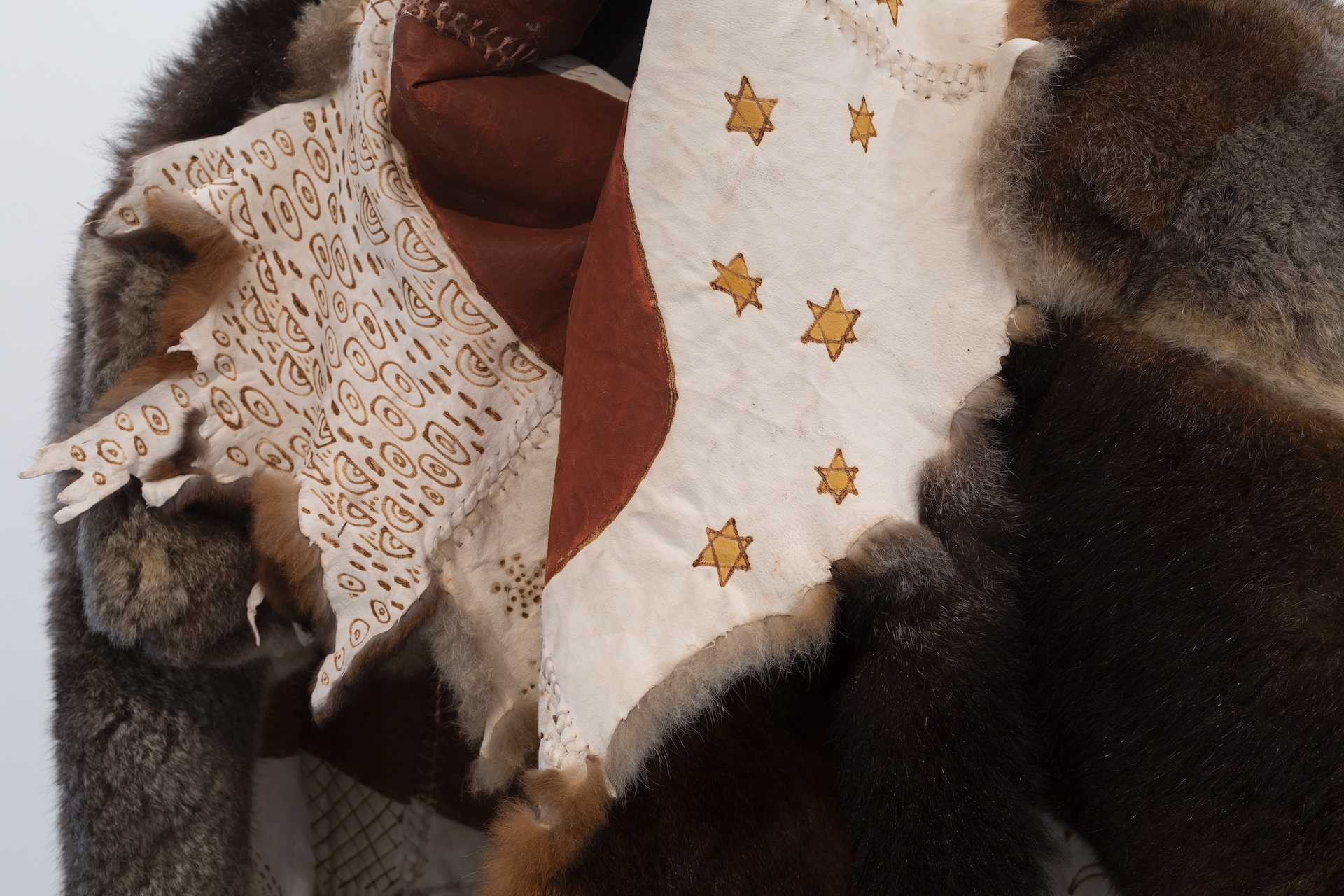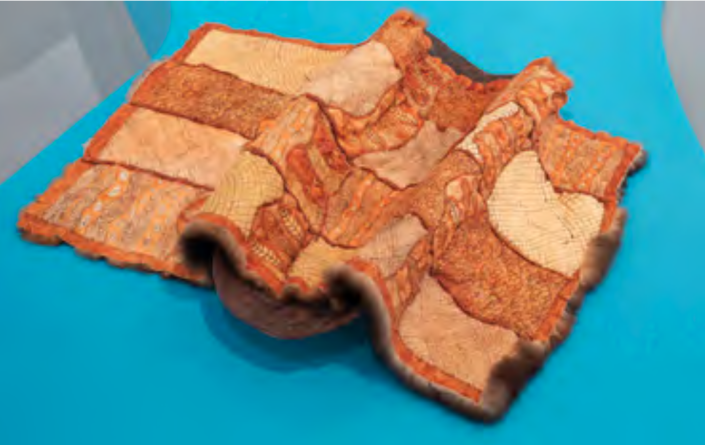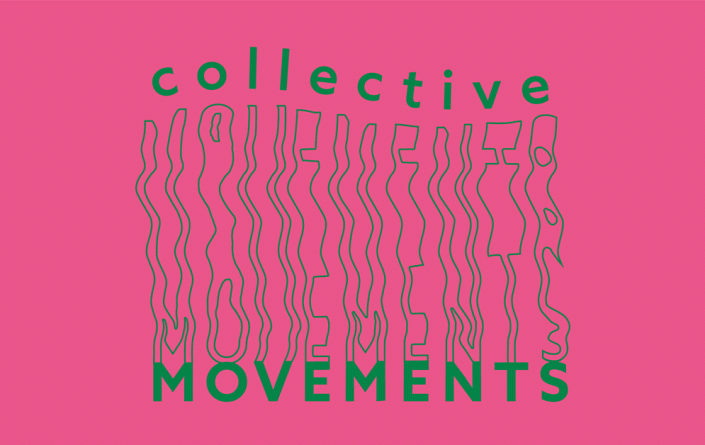Possum Skin Cloak Story
Since 1999
The Possum Skin Cloak Story told in Collective Movements traces the beginnings of one of the most significant cultural renaissances of south-east Australia, the widespread return of possum skin cloak making, which began with four Koorie women answering the calls of their Ancestors.
During a printmaking workshop visit to the Melbourne Museum in 1999, Gunditjmara Keerray Woorroong woman Vicki Couzens and Yorta Yorta, Mutti Mutti and Boonwurrung woman Lee Darroch encountered the Gunditjmara Lake Condah Cloak, one of six known surviving possum skin cloaks from the nineteenth century. During this experience, the Ancestors of the cloak gifted Vicki a vision ‘to return cloaks to community’. Vicki shared this with Lee, and in collaboration with Yorta Yorta artist Treahna Hamm and Keerray Woorroong woman and Vicki’s sister, Debra Couzens (1962–2021), the women embarked on the journey to recreate the cloaks of their Ancestors and distribute cloak-making knowledge back to community.
Lee and Treahna collaborated on the Yorta Yorta cloak collected from Maiden’s Punt (Echuca) in 1853, also held in the museum’s collection, while Debra and Vicki collaborated on the Gunditjmara cloak collected from Lake Condah in 1872. They sought permission and guidance from their Elders and advice from other cloak makers in the community. They tried different techniques, adapting to contemporary materials on hand. This experimentation along with knowledge sharing, collaboration and support between the women was key to replicating the cloaks.
These beginnings have had a lasting legacy, with many cloak makers, including the original collective members, teaching workshops in schools, childcare settings, hospitals, Elders groups and more. Such activities have regenerated and reinvigorated possum skin cloak knowledge by reconnecting individuals, families and communities to their birthright cultural knowledges and practices, seeding and enabling continuation and future creation through the generations.
This work grew to include contemporary artist, Mutti Mutti, Yorta Yorta, Boonwurrung/Wemba Wemba woman Maree Clarke in community workshops organised for the Opening Ceremony of the 2006 Commonwealth Games. Following this major project, Vicki, Lee and Maree formed Banmirra Arts to facilitate workshops across south- east Australia.
A focus on children saw another shift in the practice, with many cloaks made specifically for young people, and workshops being held for our young ones to instill pride and cultural knowledge.
Lee crafted Dhamala Biganga (Grandfather Possum Cloak) around 2005, which captures stories about Yorta Yorta Country, passed down through her father, to teach to her children and grandchildren.
Treahna’s Baby Possum Skin Cloak was made in 2009–10 to be worn by a young Indigenous person, designed to be added to as the child learns and grows.
Treahna continues to work with young people in both primary and high schools across the South East, sharing Aboriginal arts and culture.
In 2013, Barapa Barapa, Wiradjuri and Yorta Yorta Elder Aunty Esther Kirby worked with Vicki and Maree to deliver cloak-making workshops with children from the Victorian Aboriginal Child Care Agency (VACCA).
They shared information about designs, kinship, language and stories to empower the children to connect to their culture and to each other, and the cloaks are used today in school graduations, healing spaces and debutante balls among other important life events.
Across the South East, families now use cloaks in birthing, welcoming babies to Country, ceremonies, and in the passing of our loved ones. Cloaks have made their way into the everyday life of Koorie people once again and are used to pass on story and knowledge of place, kinship and identity.
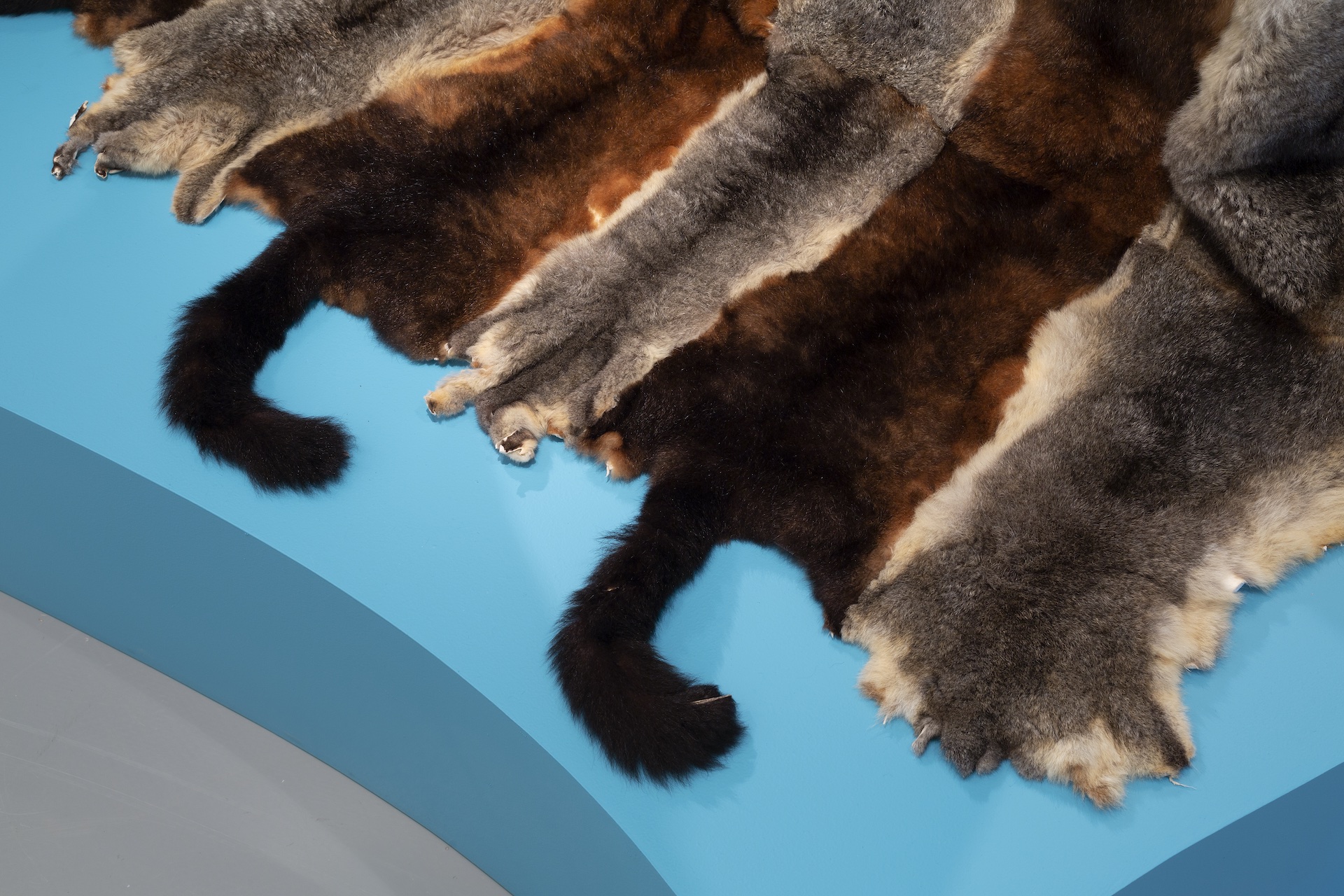
Lee Darroch, Dhamala Biganga (Grandfather Possum Cloak) c.2005 (detail). Installation view, Collective Movements, Monash University Museum of Art, Melbourne, 2022.
Exhibited in Collective Movements:
DEBRA COUZENS (1962–2021)
Merreng Keentucun (Meeting Place) 2002
ink on paper
23.5 x 18.7 cm sight
Thanambool Yana (Black Woman’s Walk) 2002
ink on paper
23.5 x 17 cm sight
Both National Museum of Australia, Canberra
VICKI COUZENS
Ancestral Memories 1998
ink on paper
27 x 18.7 cm sight
Koorie Heritage Trust Inc., Melbourne
Country (Possum Skin Cloak Design) 1998
linocut
35 x 22.3 cm sight
Koorie Heritage Trust Inc., Melbourne
Karraparr Koorramook (Markings on Rug) 2002
ink on paper
34 x 30 cm irreg.
National Museum of Australia, Canberra
Nyarrayt (Small Possum Skin Rug) 2002 ink on paper
25 x 19 cm irreg.
National Museum of Australia, Canberra
VICKI COUZENS AND DEBRA COUZENS (1962–2021)
Palooyn Wanyoo Ngeegye Alam Meen (Possum Skin Cloak for Our Ancestor) 2002
reproduction of a possum skin cloak collected in 1872 from Lake Condah, Victoria
53 possum skins, waxed cotton and pokerwork designs
262x176cm
National Museum of Australia, Canberra
LEE DARROCH
Dhamala Biganga (Grandfather Possum Cloak) c.2005
possum skins, pokerwork designs, ochre and thread
approx. 200 x 150 cm Courtesy of the artist
TREAHNA HAMM
Baby Possum Skin Cloak 2009–10 possum skins, pokerwork designs, wax thread and ochre
69 x 123 cm irreg.
AlburyCity Collection
CHILDREN IN WORKSHOPS WITH VICKI COUZENS, AUNTY ESTHER KIRBY AND MAREE CLARKE
Possum Skin Children’s Cloak Number Three 2013
possum skins, pokerwork designs, wax thread and ochre
approx. 170 x 100 cm
The Victorian Aboriginal Child Care Agency, Melbourne
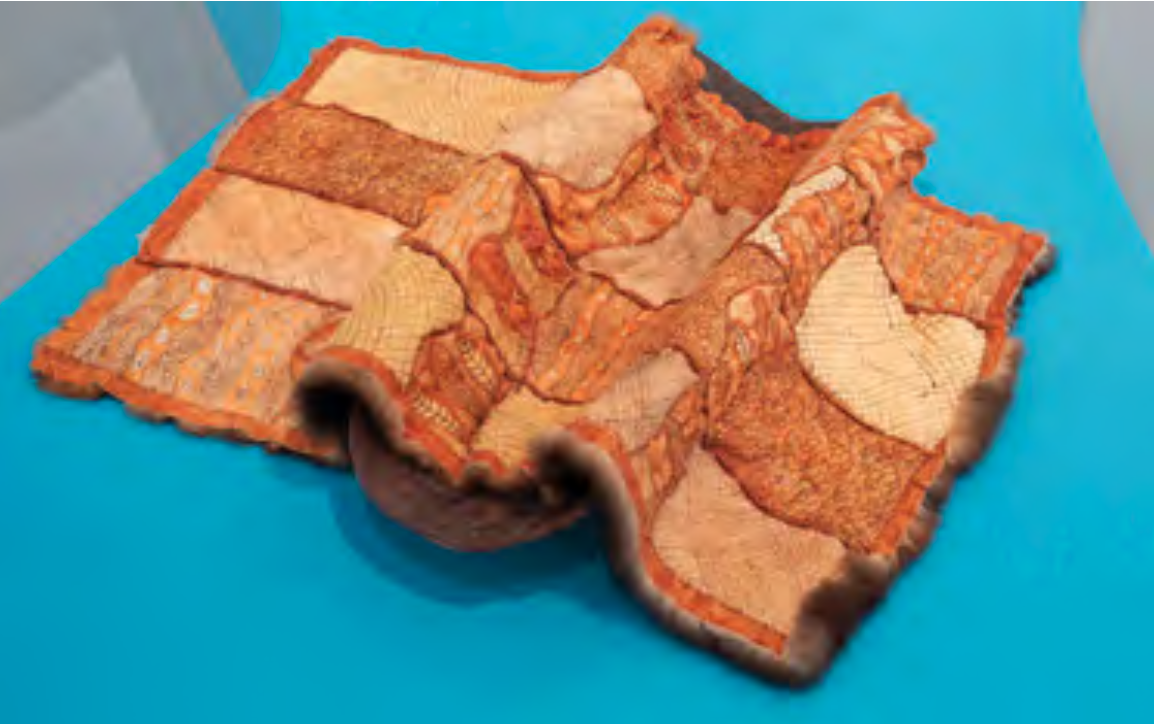
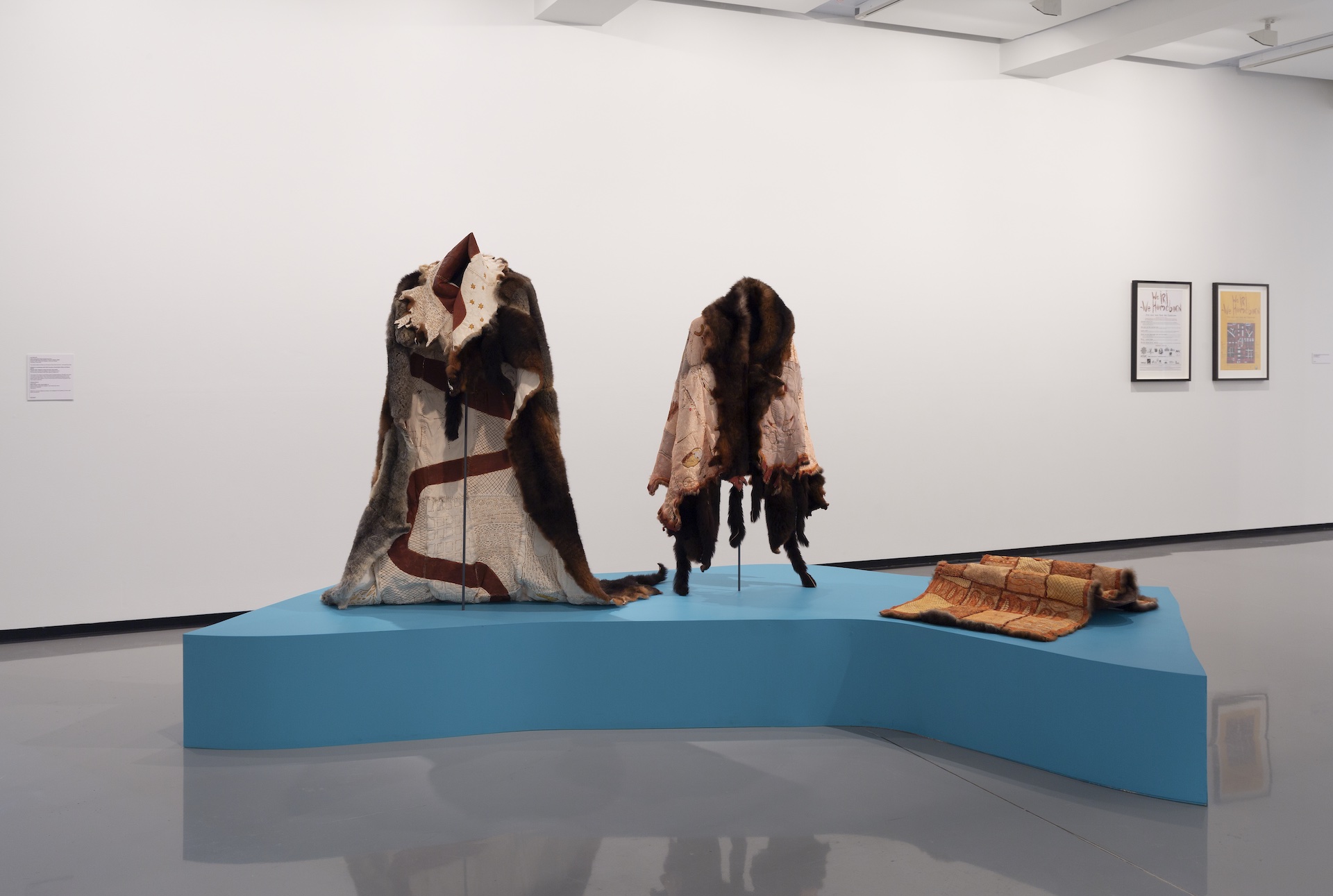
‘When people are seeing possum skin cloaks today, they’re seeing the contemporary cultural revitalisation of a practice that’s been sleeping, that has been part of all those practices that have been impacted by colonial genocidal practices. These things are profound expressions of people’s connectivity to their being, who they are, and our belonging.’
—Vicki Couzens
Artworks — Exhibitions
-

Possum Skin Cloak Story Baby Possum Skin Cloak 2009–10
Treahna Hamm
-

Possum Skin Cloak Story Dhamala Biganga (Grandfather Possum Cloak) c. 2005
Photo: Christian Capurro Lee Darroch, (detail).
-

Possum Skin Cloak Story
Installation views, Collective Movements, Monash University Museum of Art, Melbourne, 2022. Photos: Christian Capurro

